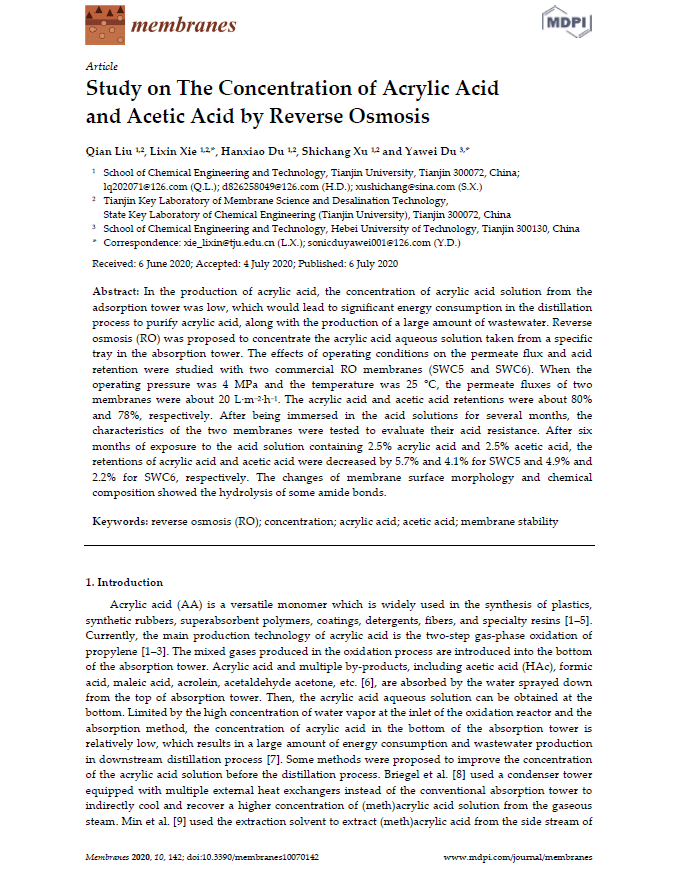In the production of acrylic acid, the concentration of acrylic acid solution from the adsorption tower was low, which would lead to significant energy consumption in the distillation process to purify acrylic acid, along with the production of a large amount of wastewater. Reverse osmosis (RO) was proposed to concentrate the acrylic acid aqueous solution taken from a specific tray in the absorption tower. The effects of operating conditions on the permeate flux and acid retention were studied with two commercial RO membranes (SWC5 and SWC6). When the operating pressure was 4 MPa and the temperature was 25 °C, the permeate fluxes of two membranes were about 20 L·m−2·h−1. The acrylic acid and acetic acid retentions were about 80% and 78%, respectively. After being immersed in the acid solutions for several months, the characteristics of the two membranes were tested to evaluate their acid resistance. After six months of exposure to the acid solution containing 2.5% acrylic acid and 2.5% acetic acid, the retentions of acrylic acid and acetic acid were decreased by 5.7% and 4.1% for SWC5 and 4.9% and
2.2% for SWC6, respectively. The changes of membrane surface morphology and chemical composition showed the hydrolysis of some amide bonds.
